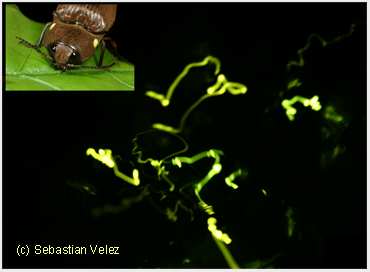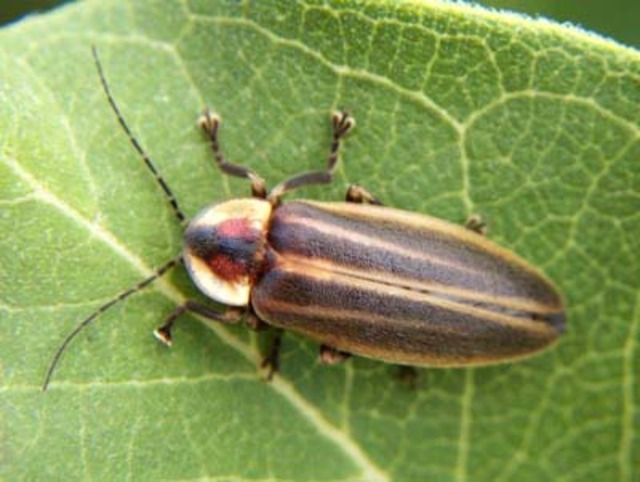As a child growing up in the 1960s and 1970s, the night was dense darkness. When the moon doesn’t shine and stars seem absent, you cannot see the hand in front of your face. Light pollution be damned.
But this intense darkness would occasionally be broken by a small swarm of peeny wallies, Jamaican fireflies. They would go up and down, sometimes around, and the beauty of it was electrifying. To capture this artistry, we would grab jars or bottles, catch as many peeny wallies as we could, and admired the glow.

Peeny wallies, (also called click beetles as they give off a clicking sound with their head when you hold them in your hand) and their smaller cousins, the “blinkies,” whose lights go on and off, have virtually disappeared from the Jamaican landscape. No one explanation satisfies. Among the more common is the erosion of their habitats through deforestation, human residence and farming. Some blame it on pesticides, particularly aerial spraying of banana plantations that kill peeny wallies and blinkies, in addition to targeted insects and “pests.”
The disappearance of these creatures is not unique to Jamaica. A 2014 New York Times article notes, “Scientists have for years been warning that the world’s estimated 2,000 species of fireflies are dwindling, partly because expanding cities are altering water flow patterns and yielding more light pollution, which researchers say can hamper the mating rituals of the insects.”
Changing water flow and artificial light, such as street lights and motor vehicle headlights, are to be blamed, these scientists speculate.
There is such a thing as the International Firefly Symposium. Its 2017 gathering is April 24-27 in Taipei, Taiwan. At its 2010 meeting in Selangor, Malaysia, the symposium declared:
Fireflies are indicators of the health of the environment and are declining across the world as a result of degradation and loss of suitable habitat, pollution of river systems, increased use of pesticides in agro-ecosystems and increased light pollution in areas of human habitation. The decline of fireflies is a cause for concern and reflects the global trend of increasing biodiversity loss.
In other words, as far as ecology and the environment go, fireflies, including peeny wallies and blinkies, are like the proverbial canary in a coal mine. A dead canary means those in the mine will all likelihood be dead soon if they don’t get out. As the 2010 symposium announced:
The habitats of fireflies are a refuge for many forms of wildlife including mammals, birds, reptiles, amphibians and numerous species of invertebrates. Conservation of these habitats, therefore, has the potential to conserve a wide range of fauna.
Does the almost complete disappearance of peeny wallies in Jamaica mean the island is in mortal environmental danger?
Scientific study
Clemson University in South Carolina in the United States runs a Vanishing Firefly Project, which includes a mobile app where persons may submit research data. There should be enough data on the species in Jamaica to be part of this or any other metadata project.
Researchers from the Johns Hopkins University in Baltimore, Maryland, have done extensive research on fireflies in Jamaica. They discovered some 200 species in Jamaica and Maryland alone. Other researches claim Jamaica has some 50 species of fireflies.
John Buck, part of the first Johns Hopkins team to Jamaica in 1936, found “ample firefly species” that led to “the first photoelectrically measured emission spectra from fireflies.” The field of his study, photoemission spectroscopy, was important to various applications, including x-ray technology, and the humble peeny wally and blinky made their own contribution to this field.

Buck wrote that “the members of the Seventh Botanical Expedition of the Johns Hopkins University witnessed displays of firefly activity in the British West Indies as spectacular in their way as any reported from the Orient.”
Another Johns Hopkins researcher, Howard Seliger, a biochemist:
Helped other scientists harness bioluminescent molecules to identify key sections of DNA for genetic studies. And he used such fluorescent molecules to probe carcinogenic compounds in cigarette smoke. He also was able to see which potentially carcinogenic compounds became most dangerous by measuring the low-intensity light produced as the compounds react with enzymes inside cells.
The fireflies they studied were mostly at the base of the John Crow Mountains in the Blue Mountain range in eastern Jamaica, at just about 750 feet up. They said:
It is possible in Jamaica, in a relatively small area at the same altitude, to collect numbers of more than a dozen different species of firefly, which is a distinct advantage for the types of comparisons in which we are interested.
Firefly dresses and jewels
Jamaicans apparently put peeny wallies to some unusual uses. Bessie Pullen-Burry, writing in 1905, said “a strange historian,” whose name was Peter Martyn, “declared that the aborigines used to hunt the Indian conies by the light of fireflies fastened to their toes!”
Pullen-Burry recounted what she called “a more curious story.” In 1903, some “Creole belle,” she said, “appeared in a dress covered with the beautiful insects alive and sparkling.” How was this done? “They had been carefully and separately fastened on to a net, and the effect was probably as beautiful as it was original.”
Harry Pariser in Jamaica: A Visitor’s Guide, claimed “fireflies are so huge that they were once captured and worn as living jewels by planters’ wives when attending elegant balls held on the sugar plantations.”
Visitors to Jamaica were fascinated by the peeny wallies. Albert Goodwin, spending a month on the island in 1902, was enthralled “by the phenomenon of fireflies lighting up the tropical foliage in the West Indies.” His diary of March 26, 1902, recorded the following during his stay at Montpelier, St. James, in western Jamaica:
Was woken up in the night by a sound like someone playing the piano; heard the bass of it and wondered who the nocturnal player could be. Then suddenly a light flared on ceiling and I realised the bass was the hum of a big firefly and the candle its light. Watched it flying about till sleep brought oblivion.
Some Chinese have recognized the value of fireflies. Josh Lew, writing for Mother Nature Network in December 2015, reports that “entrepreneurs are trying to revive the population of bioluminescent insects in special firefly parks.” One such park was opened in the city of Wuhan in Hubei province in 2015. “Visitors can walk directly through a firefly habitat and observe the beetles from afar.” Activities are included as “the park hosts camping events, guided hikes and children’s nature activities.”
Can… would… Jamaica become as creative? One doubts it. But who is to know? Perhaps some enterprising person out there may take on this challenge. There’s nothing like a swarm of Jamaican peeny wallies in all their glory.
Eron Henry is author of Reverend Mother, a novel
I found this article because I just happenedI to mention Blinkies t I my 16y.o son who was born and is growing up outside of Jamaica. I knew he would have no clue what a Blinkie was so I said it was some sort of relative to the Peenie Wallie. His response was “Mom, what om earth is a Peenie Wallie? The name doesn’t even give any indication!” When I told him that it is a firefly he said, “Only a Jamaican would come up with that name!” So I had to google it and luckily I found the picture and this article.
I grew up in Cambridge, St James in the 70’s, close to the river and it was a special treat for us when the Peenie Wallies came out. We would get a shirt or some other piece of clothing to flag them down with, put them in a glass jar and use them for light. They would even fly into the house! But we were always sure to release them before their light went out because we thought the light would help them to find their way home!:)